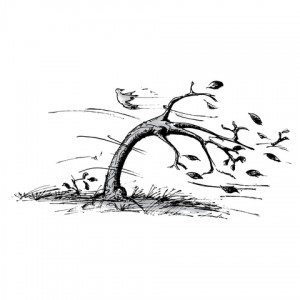
During a windstorm, the force of the wind pushes against the outside of your home. The force is passed along from your roof to the exterior walls and finally to the foundation. Homes can be damaged or destroyed when the energy from the wind is not properly transferred to the ground. However, you can take steps to add protection to your home from wind damage.
The first thing you should do is determine what type of roof you have. Homes with gabled roofs are more likely to suffer damage during a strong wind storm.
A gabled roof looks like an A on the ends, with the outside wall going to the top of the roof. The end wall of a home with a gabled roof takes a beating during a wind storm, and those that are not properly braced can collapse, causing major damage to the roof. In most homes, gabled roofs are built using manufactured trusses. Sheets of roof sheathing fastened to the trusses with nails or staples, and roofing material is fastened to the sheathing. In many cases, the only thing holding the trusses in place is the plywood on top. This may not be enough to hold the roof in place during hurricane or tornado-strength winds. Installing additional truss bracing makes your roof’s truss system stronger.
To inspect your roof’s bracing, go into the attic. If your attic is not floored, be careful to walk only on the wood joists, or install boards wide enough to walk on. Notice how the plywood is attached to the truss system. If most of the large nails or staples coming through the sheathing have missed the trusses, consider having the sheathing properly installed.
Damaging Wind Velocities
Wind velocities vary depending on the region in which you live. However, these velocities can cause wind damage to your roof and much more:
- 47-54 mph – Minor structural damage may occur; shingles blown off roofs
- 48-55 mph – Trees uprooted, structural damage likely
- 56-63 mph – Widespread damage to structures
- 64+ mph – Severe structural damage to buildings, homes and landscape
Be sure to inspect your roof at regular intervals, but especially after a windstorm. Take notice if there are missing, loose or worn shingles. These are tell-tale signs your roof needs immediate attention. Also be sure that the flashing is in place and undamaged. Flashing is the impervious material installed to prevent the passage of water into a structure from a joint. If your flashing is loose, high winds can easily get under and lift it off.
